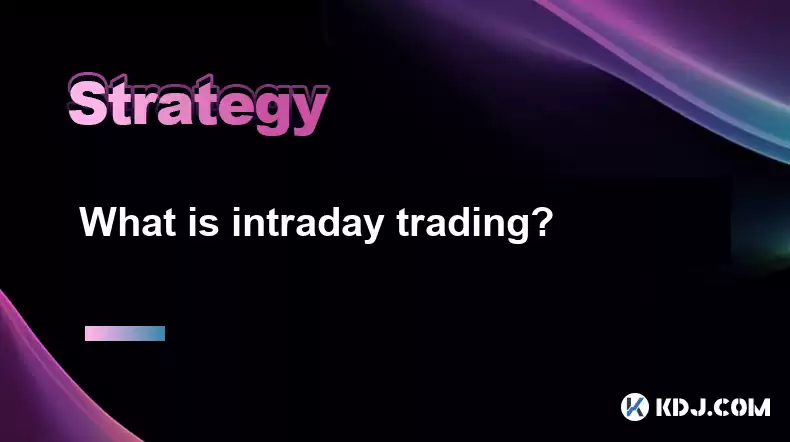-
 Bitcoin
Bitcoin $119900
1.12% -
 Ethereum
Ethereum $4599
9.32% -
 XRP
XRP $3.282
4.63% -
 Tether USDt
Tether USDt $0.9998
-0.02% -
 BNB
BNB $833.4
3.91% -
 Solana
Solana $193.3
10.47% -
 USDC
USDC $0.9999
-0.01% -
 Dogecoin
Dogecoin $0.2366
5.64% -
 TRON
TRON $0.3534
2.64% -
 Cardano
Cardano $0.8477
9.54% -
 Chainlink
Chainlink $23.33
10.42% -
 Hyperliquid
Hyperliquid $45.59
5.29% -
 Stellar
Stellar $0.4509
5.00% -
 Sui
Sui $3.888
6.46% -
 Bitcoin Cash
Bitcoin Cash $620.4
7.20% -
 Hedera
Hedera $0.2613
6.53% -
 Ethena USDe
Ethena USDe $1.001
0.01% -
 Avalanche
Avalanche $24.75
8.33% -
 Litecoin
Litecoin $130.2
8.10% -
 Toncoin
Toncoin $3.541
5.12% -
 UNUS SED LEO
UNUS SED LEO $9.079
1.11% -
 Shiba Inu
Shiba Inu $0.00001367
5.60% -
 Uniswap
Uniswap $11.55
4.73% -
 Polkadot
Polkadot $4.181
8.43% -
 Cronos
Cronos $0.1664
0.63% -
 Dai
Dai $0.9998
-0.03% -
 Ethena
Ethena $0.7980
2.17% -
 Pepe
Pepe $0.00001225
8.94% -
 Bitget Token
Bitget Token $4.452
1.25% -
 Aave
Aave $317.1
8.17%
What is intraday trading?
Intraday trading in cryptocurrency offers potential for high returns but also carries significant risk, requiring traders to have expertise in technical analysis, risk management, and emotional discipline.
Feb 19, 2025 at 07:43 pm

Key Points
- Introduction to intraday trading
- Benefits of intraday trading
- Strategies for successful intraday trading
- Risks involved in intraday trading
- Tips for effective intraday trading
- Top 5 cryptocurrency exchanges for intraday trading
- FAQs on intraday trading in the cryptocurrency circle
What is Intraday Trading?
Intraday trading, also known as day trading, is a type of trading that involves buying and selling financial instruments within a single trading day. Traders who engage in intraday trading aim to profit from price fluctuations that occur during the trading day, typically holding their positions for only minutes, hours, or a few hours at most.
Benefits of Intraday Trading:
- Potential for high returns: Due to the short-term nature of intraday trading, it offers the potential for significant profits if executed successfully. Traders can exploit price fluctuations throughout the day to generate returns.
- Flexibility: Intraday trading provides flexibility as traders can enter and exit positions within the same trading session. This allows them to manage risk and capitalize on opportunities in a timely manner.
- Avoid overnight risk: Intraday traders hold their positions for a short duration, eliminating the risks associated with holding positions overnight, such as market volatility or unexpected events.
Strategies for Successful Intraday Trading:
- Technical analysis: Intraday traders rely heavily on technical analysis, such as charting and studying historical market data, to identify potential trading opportunities.
- Trend following: This strategy involves following the current market trend and entering trades in the direction of the trend. Traders aim to identify and ride a wave of momentum.
- Range trading: Range trading involves identifying a range of prices within which an asset's price is likely to fluctuate. Traders enter trades when the price approaches or touches the range boundaries.
- Scalping: Scalping involves taking small profits on numerous trades executed throughout the day. Traders focus on tight bid-ask spreads and quick execution to accumulate profits.
Risks Involved in Intraday Trading:
- High risk: Intraday trading carries a high level of risk due to its short-term and speculative nature. Traders must be aware of the potential for significant losses.
- Emotional trading: The intense and fast-paced nature of intraday trading can lead to emotional decision-making. Traders need to maintain discipline and avoid impulse trades.
- Market volatility: Intraday traders must be prepared for market volatility, which can cause unexpected price swings and increase the risk of losses.
Tips for Effective Intraday Trading:
- Set realistic expectations: Recognize that not all trades will be profitable and set realistic profit targets.
- Manage risk: Implement proper risk management strategies, such as setting stop-loss orders and calculating risk-to-reward ratios.
- Control emotions: Maintain emotional discipline and avoid allowing emotions to influence trading decisions.
- Technical proficiency: Develop proficiency in charting and technical analysis techniques to make informed trading decisions.
- Test strategies: Backtest or paper trade trading strategies to refine them before implementing them in live trading.
Top 5 Cryptocurrency Exchanges for Intraday Trading:
Binance: Largest cryptocurrency exchange by volume, offering a wide range of trading pairs and advanced features.
Coinbase: Known for ease of use, security, and support for a variety of beginner-friendly features.
Kraken: Reputable exchange with high liquidity, a wide range of order types, and advanced tools for professional traders.
Huobi: Exchange with a strong presence in Asia, offering a variety of products and services, including futures and margin trading.
Bitstamp: Long-established and highly secure exchange, focusing on institutional clients and offering over-the-counter trading services.
FAQs on Intraday Trading in the Cryptocurrency Circle:
Q1. Is intraday trading suitable for beginners?
- No, intraday trading is not recommended for beginners due to its high risk and complexity. It requires significant expertise, risk management skills, and emotional discipline.
Q2. What are the key differences between intraday and swing trading?
- Intraday trading involves holding positions for hours or less, while swing trading involves holding positions for several days to weeks. Swing traders focus on broader market trends, while intraday traders exploit short-term price fluctuations.
Q3. How can emotional trading be avoided in intraday trading?
- Traders can avoid emotional trading by developing a trading plan, managing risk, setting stop-loss and take-profit orders, and avoiding trading when stressed or fatigued.
Q4. What is the importance of risk-to-reward ratio in intraday trading?
- The risk-to-reward ratio determines the potential profit versus potential loss of a trade. Traders should aim for a positive risk-to-reward ratio, ensuring that the potential profit outweighs the potential loss.
Q5. How can intraday traders protect their profits?
- Intraday traders can protect their profits by setting realistic profit targets, controlling emotions, using stop-loss orders, and taking partial profits strategically.
Disclaimer:info@kdj.com
The information provided is not trading advice. kdj.com does not assume any responsibility for any investments made based on the information provided in this article. Cryptocurrencies are highly volatile and it is highly recommended that you invest with caution after thorough research!
If you believe that the content used on this website infringes your copyright, please contact us immediately (info@kdj.com) and we will delete it promptly.
- Unich's OTC Exchange: Surging with $1.2B Volume – What's the Hype?
- 2025-08-13 02:50:11
- MoonBull's Explosive Moves: Your Crypto Whitelist Ticket to Ride!
- 2025-08-13 02:30:11
- MAGACOIN Finance: Don't Miss the Presale Bonus!
- 2025-08-13 02:30:11
- Trump's Crypto Kingdom: $2.4 Billion and Counting
- 2025-08-13 02:50:11
- Solana, LSTs, and SEC Approval: A New Dawn for Crypto?
- 2025-08-13 02:55:12
- Bitcoin's Profit Surge: Unpacking the BTC Value Boom
- 2025-08-13 02:55:12
Related knowledge

How to use stop-loss orders to limit potential losses?
Aug 08,2025 at 02:01pm
Understanding Stop-Loss Orders in Cryptocurrency TradingA stop-loss order is a risk management tool used by traders to automatically sell a cryptocurr...

What are the most promising altcoins to invest in?
Aug 10,2025 at 11:42am
Understanding the Role of Private Keys in Cryptocurrency WalletsIn the world of cryptocurrency, private keys are the cornerstone of ownership and cont...

How to read cryptocurrency charts and use technical analysis?
Aug 08,2025 at 11:08am
Understanding the Basics of Cryptocurrency ChartsCryptocurrency charts are graphical representations of price movements over time. These charts are es...

What is the difference between long-term holding (HODLing) and short-term trading?
Aug 10,2025 at 05:30pm
Understanding HODLing in the Cryptocurrency SpaceThe term HODL originated from a typo in a 2013 Bitcoin forum post and has since become a widely accep...

How to do your own research (DYOR) before investing in a crypto project?
Aug 08,2025 at 09:07pm
Understanding the Core Principles of DYOR in CryptocurrencyEngaging in due diligence before investing in any cryptocurrency project is essential to mi...

How to build a diversified crypto portfolio?
Aug 09,2025 at 12:21pm
Understanding the Importance of Diversification in CryptoDiversification in the cryptocurrency space is a strategy used to reduce risk by spreading in...

How to use stop-loss orders to limit potential losses?
Aug 08,2025 at 02:01pm
Understanding Stop-Loss Orders in Cryptocurrency TradingA stop-loss order is a risk management tool used by traders to automatically sell a cryptocurr...

What are the most promising altcoins to invest in?
Aug 10,2025 at 11:42am
Understanding the Role of Private Keys in Cryptocurrency WalletsIn the world of cryptocurrency, private keys are the cornerstone of ownership and cont...

How to read cryptocurrency charts and use technical analysis?
Aug 08,2025 at 11:08am
Understanding the Basics of Cryptocurrency ChartsCryptocurrency charts are graphical representations of price movements over time. These charts are es...

What is the difference between long-term holding (HODLing) and short-term trading?
Aug 10,2025 at 05:30pm
Understanding HODLing in the Cryptocurrency SpaceThe term HODL originated from a typo in a 2013 Bitcoin forum post and has since become a widely accep...

How to do your own research (DYOR) before investing in a crypto project?
Aug 08,2025 at 09:07pm
Understanding the Core Principles of DYOR in CryptocurrencyEngaging in due diligence before investing in any cryptocurrency project is essential to mi...

How to build a diversified crypto portfolio?
Aug 09,2025 at 12:21pm
Understanding the Importance of Diversification in CryptoDiversification in the cryptocurrency space is a strategy used to reduce risk by spreading in...
See all articles

























































































